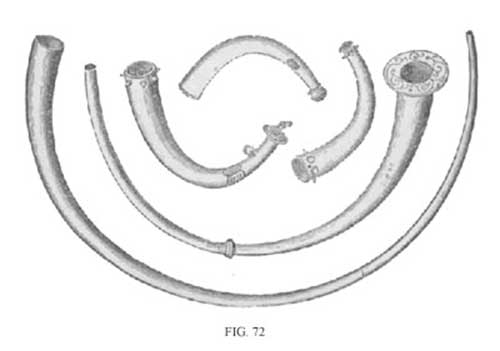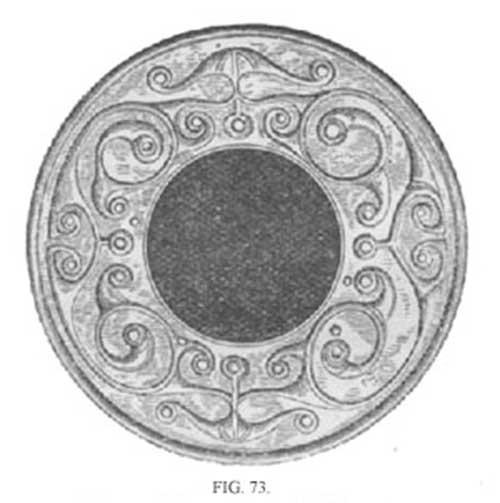Irish Trumpets
From A Smaller Social History of Ancient Ireland 1906
« previous page | contents | start of chapter | next page »
CHAPTER XIII....continued
The Irish had curved bronze trumpets and horns, of various shapes and sizes, which, judging from the great numbers found buried in clay and bogs, must have been in very general use. They occur indeed in far greater numbers in Ireland than in any other country. The fact that many are often found hoarded together would indicate their military use. In the National Museum in Dublin there is a collection of twenty-six trumpets, varying in length from about 18 inches to 8 feet; most of them of finished and beautiful workmanship.
Among the household of every king and chief there was a band of trumpeters, who were assigned their proper places at feasts and meetings. Trumpets were used for various purposes:—in war (p. 68, above); in hunting; for signals during meetings and banquets; as a mark of honour on the arrival of distinguished visitors; and such like. For war purposes, trumpeters—as already noticed—had different calls for directing movements.
FIG 72. Group of Irish Trumpets, now in National Museum, Dublin. The two at bottom, hammered bronze the larger 8 1/2 feet long, the smaller, 6 feet, with circular ornamented plate at end, shown in fig. 73. Each of these formed of two pieces most skilfully riveted along the whole length. The three smaller ones at top made in one piece by casting. (From Wilde's Catalogue).
The ancient Irish were very fond of a craebh-ciuil [crave-cule], or 'musical branch,' a little branch on which were suspended a number of diminutive bells, which produced a sweet tinkling when shaken: a custom found also in early times on the Continent. The musical branch figures much in Irish romantic literature.
FIG. 73. Ornamental bronze Plate at end of Trumpet. (From Wilde's Catalogue).


